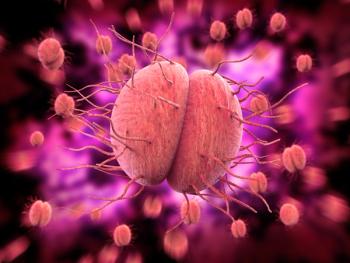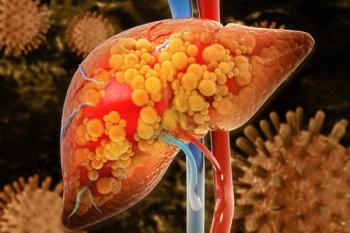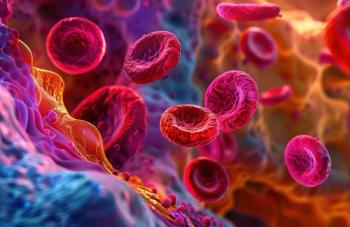
New Proteomic Analysis Maps Cytokine Signatures Driving IPF
Key Takeaways
- The study identified 32 differentially expressed proteins in IPF, highlighting cytokine dysregulation as a key molecular feature of the disease.
- Five hub proteins—FGF2, HGF, HBEGF, ERBB3, and ANGPT2—were identified as central nodes in cytokine signaling, potentially driving IPF progression.
A study identified 32 dysregulated cytokines and 5 key signaling hubs in idiopathic pulmonary fibrosis (IPF), mapping a complex network of profibrotic pathways that may serve as future therapeutic targets.
A new proteomic analysis is shedding a fresh light on the cytokine networks fueling idiopathic
The integrative proteomic study provides one of the most comprehensive views to date of cytokine abnormalities in IPF. By defining core signaling hubs, immune-cell associations, and potential therapeutic targets, the research offers new molecular signposts for drug development—an urgent need for a disease that remains fatal for most patients despite current treatments.
“While pirfenidone and nintedanib (the only antifibrotic drugs currently approved for treating IPF) can slow lung function decline, their efficacy in halting pulmonary fibrosis progression and enhancing patients’ quality of life remains limited,” wrote the researchers. “Additionally, there are concerns regarding drug resistance and adverse effects. Therefore, safe and effective pharmacological agents are urgently needed.”
The new findings, generated from cytokine profiling of lung tissue and supported by bioinformatics, single-cell sequencing, and drug–gene interaction mapping, offer a high-resolution look into the molecular dysregulation underlying fibrosis.
IPF is defined by relentless scarring of lung tissue, eventual respiratory failure, and a median survival
The analysis identified 32 differentially expressed proteins (DEPs) between IPF and control lungs, with 11 upregulated and 21 downregulated. Many of these proteins have been previously associated with IPF development, including chemokines, matrix-remodeling enzymes, and receptors involved in immune signaling. The expression patterns were sufficiently distinct to separate IPF and control samples through principal component analysis, emphasizing that cytokine dysregulation is a defining molecular feature of the disease.
Functional enrichment analysis revealed that these DEPs were highly concentrated in pathways associated with cell chemotaxis, growth factor binding, PI3K–Akt signaling, MAPK signaling, and cytokine–receptor interactions—all known contributors to fibroblast activation, epithelial injury, and extracellular matrix accumulation. Additional gene-set enrichment analysis performed across all 440 measured cytokines highlighted enrichment of biological processes tied to peptide hormone signaling, nitrogen compound response, and insulin-response pathways, suggesting oversights in current models of IPF pathophysiology.
To understand how these DEPs organize into functional networks, the researchers generated a protein–protein interaction map using STRING and identified 5 hub proteins with high centrality scores: FGF2, HGF, HBEGF, ERBB3, and ANGPT2. These molecules act as central communication nodes in cytokine signaling and growth-factor pathways, and their dysregulation may represent core drivers of IPF progression. One hub protein, HGF, showed the strongest functional similarity to other hub proteins, implying it may be especially critical in the broader cytokine network.
The study also used transcription-factor prediction algorithms to map which upstream regulators may drive the expression of these hub proteins. Thirty-one transcription factors—including SP1, STAT3, HIF1A, and LMO2—emerged as potential regulatory controllers, underscoring the deep integration of cytokine signaling with inflammation, hypoxia, and wound-repair pathways.
Since IPF is strongly linked to immune dysregulation, the team analyzed immune-cell infiltration using the CIBERSORT algorithm. Among 22 immune-cell types examined, resting natural killer (NK) cells were significantly more abundant in IPF lung tissue and were inversely correlated with HBEGF expression. This relationship suggests an underexplored interface between NK-cell activity and cytokine-driven injury repair.
Recognizing the urgent need for new treatment strategies, investigators used the DGIdb database to explore whether the five hub proteins are targetable by existing drugs. The analysis surfaced 67 potential agents, 13 of which have prior evidence of antifibrotic or immunomodulatory effects. These include widely studied compounds such as sirolimus, imatinib, resveratrol, and atorvastatin, as well as chemotherapy agents used in patients with lung cancer and comorbid fibrosis. While these findings do not establish clinical efficacy, they highlight promising entry points for drug repurposing.
Hub-protein expression was further validated in 3 independent GEO datasets and through immunohistochemistry on IPF lung tissue. Finally, single-cell RNA sequencing revealed the specific cellular sources of these cytokines—fibroblasts, myofibroblasts, macrophages, epithelial cells, and specialized vascular endothelial populations—confirming that cytokine dysregulation in IPF arises from multiple interacting cell types, not a single dominant driver.
References
- Shen C, Wang W, Li G, et al. Cytokine expression profiling in idiopathic pulmonary fibrosis: insights from integrative proteomic analysis. Can Respir J. Published online November 7, 2025. doi:10.1155/carj/2272156
- Raghu G, Remy-Jardin M, Richeldi L, Thomson CC, Inoue Y, Johkoh T, et al. Idiopathic pulmonary fibrosis (an update) and progressive pulmonary fibrosis in adults: an official ATS/ERS/JRS/ALAT clinical practice guideline. Am J Respir Crit Care Med 2022;205:e18–e47.
Newsletter
Stay ahead of policy, cost, and value—subscribe to AJMC for expert insights at the intersection of clinical care and health economics.













































